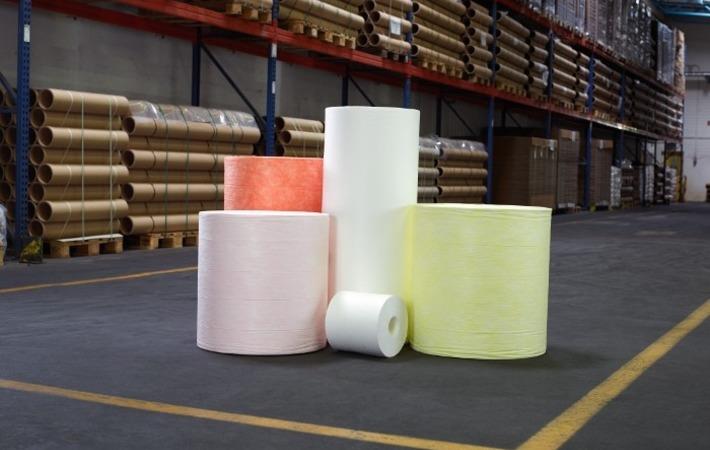Johns Manville, a manufacturer of specialty products, announced that its plant in Richland, has started production this month to make nonwoven filtration media used to create face masks to stop the spread of Covid-19. JM media meets or exceeds Level 1 BFE 95 per cent (Bacterial Filtration Efficiency) and VFE (Viral Filtration Efficiency) requirements.
Johns Manville, a manufacturer of specialty products, announced that its plant in Richland, has started production this month to make nonwoven filtration media used to create face masks to stop the spread of Covid-19. JM media meets or exceeds Level 1 BFE 95 per cent (Bacterial Filtration Efficiency) and VFE (Viral Filtration Efficiency) requirements.#
“Our high-performance nonwoven material is designed to provide high levels of filtration for various types of face masks,” Mary Rhinehart, president and CEO of Johns Manville, said in a press release.
Johns Manville, a manufacturer of specialty products, announced that its plant in Richland, has started production this month to make nonwoven filtration media used to create face masks to stop the spread of Covid-19. JM media meets or exceeds Level 1 BFE 95 per cent (Bacterial Filtration Efficiency) and VFE (Viral Filtration Efficiency) requirements.#
“Johns Manville is in a unique position to serve a market that is fulfilling a great need across the world. We are proud of our teams in Richland and throughout JM for finding new ways to support the communities and people who are on the front lines of this global crisis.”
Johns Manville, a manufacturer of specialty products, announced that its plant in Richland, has started production this month to make nonwoven filtration media used to create face masks to stop the spread of Covid-19. JM media meets or exceeds Level 1 BFE 95 per cent (Bacterial Filtration Efficiency) and VFE (Viral Filtration Efficiency) requirements.#
Most nonwoven production of face masks was abandoned in the US many years ago and moved to Asia. Given the shortage of face masks in the US and Europe, JM’s Engineered Products business decided to build on its existing capabilities and help fill the market demand.
Johns Manville, a manufacturer of specialty products, announced that its plant in Richland, has started production this month to make nonwoven filtration media used to create face masks to stop the spread of Covid-19. JM media meets or exceeds Level 1 BFE 95 per cent (Bacterial Filtration Efficiency) and VFE (Viral Filtration Efficiency) requirements.#
“Our high-performance nonwoven material is designed to provide high levels of filtration for various types of face masks,” John Vasuta, president of JM’s Engineered Products business, said. These results were verified by an FDA-registered national laboratory.
Johns Manville, a manufacturer of specialty products, announced that its plant in Richland, has started production this month to make nonwoven filtration media used to create face masks to stop the spread of Covid-19. JM media meets or exceeds Level 1 BFE 95 per cent (Bacterial Filtration Efficiency) and VFE (Viral Filtration Efficiency) requirements.#
The JM plant in Richland employs about 50 people and produces a variety of filtration products for various air and liquid applications using polypropylene and polyester meltblown technology. Richland’s meltblown filtration media can be found in numerous industrial, automotive, consumer products and FDA-approved food and healthcare applications.
Fibre2Fashion News Desk (JL)


